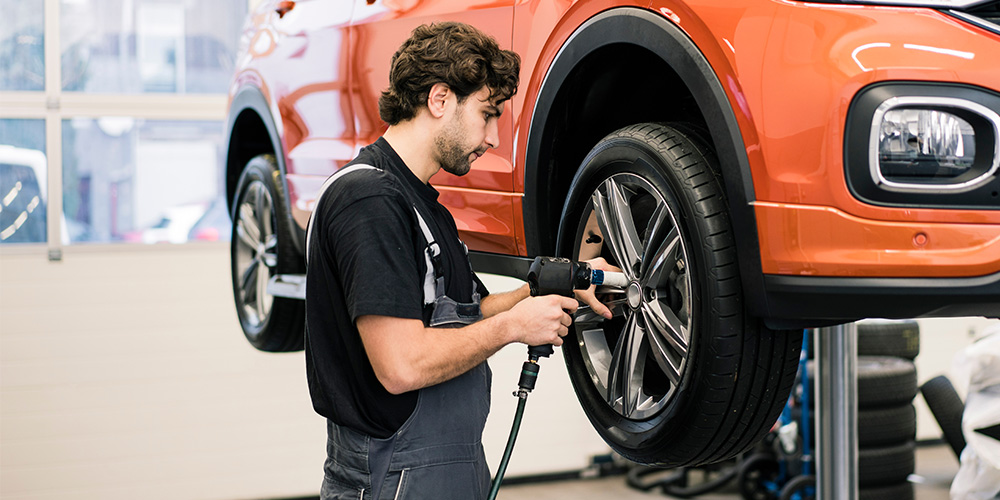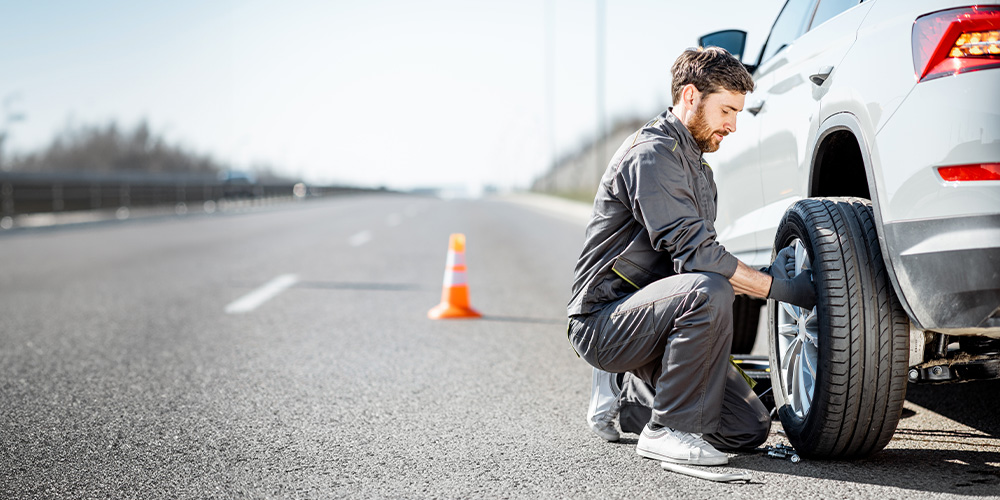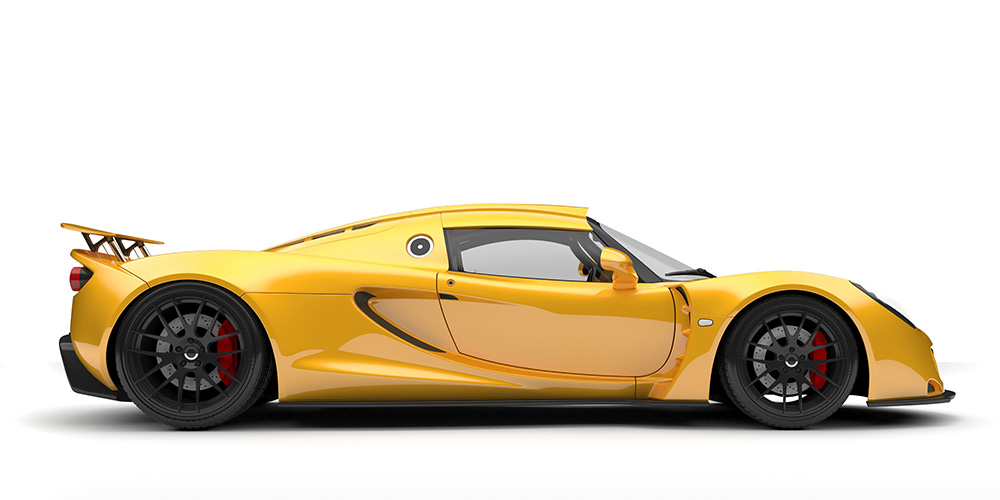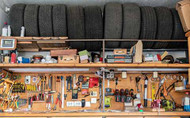Where to Install Two New Tires on Your Car?
Posted by Dusan Kovljen on Oct 21st 2024
Ideally, drivers change all four tires on their vehicles simultaneously since having the same size, type, tread design, and depth, and inflation levels of the new tires offer the best overall performance, handling, and balance.
However, this isn't always possible for a variety of reasons: a single tire has been punctured during the drive, you've bought a used car and only some tires need to be replaced due to their low tread depth, or the budget doesn't allow such expenses.
This means every driver will eventually find themselves in a situation where they have to install two tires instead of a set of four. But, where should the two new tires go? On the front or the rear axle?
To discover the answer to this question, we'd like to invite you to stick around and explore with us the reasons for choosing one axle over the other. Let's drive!
2 New Tires - Installing Tires on the Rear Axle
Since the front tires are in charge of accelerating, steering, and braking, they will wear quicker than the rear pair. As such, tread depth discrepancy develops over time between the front and the rear pairs. This is in spite of tire rotation as part of regular maintenance that balances the wear rate across all four tires.
We highly recommend installing the two new tires on your rear axle while transferring the partially worn rear ones to the front. The new tire pair is set on the rear axle because they help retain control on wet-weather roads, as tires with a deeper tread are more optimal for averting hydroplaning.
Generally, new tires provide the most traction on wet, slushy, and snowy roads with their tread details that grant maximum control in such hazardous road conditions and keep the vehicle stable.

As the driver receives feedback through the steering wheel, it is complementary to put the best tires (with the most tread depth) on the rear of the vehicle to secure a safer driving experience.
In addition, two tires with the deepest tread should always go on the rear axle, regardless if your vehicle is front-wheel-drive, rear-wheel-drive, or four-wheel-drive. After all, what's the use of adequate steering, braking, and acceleration if you have no stability during the drive?
Issues with Worn Tire Pairs
It is important where the worn tire pair goes because it directly impacts the driver's control over the vehicle, especially when the vehicle is sliding - be it hydroplaning or not.
When the front axle has tires with less tread in comparison to the rear axle tires, the front tire pair will be the first to hydroplane on wet or slide on dry roads. This will cause the vehicle to understeer. Drivers have an easier time controlling the understeering because they feel when the front axle tires start to lose the road grip. To regain control, you should decrease the throttle or release the gas pedal to slow down the vehicle.
When the partially worn tires are mounted on the rear axle, hydroplaning will lead to the loss of traction of the rear tires before the front axle tires lose theirs. This will cause the vehicle to oversteer or fishtail. Oversteering is more dangerous than understeering since it is more difficult to control the vehicle in such moments. Decreasing the throttle or quickly releasing the gas pedal will worsen the situation and increase oversteering, leading to even less control.
For safety reasons, tires should be rotated regularly. A small tread depth difference between the tires isn't enough to disrupt the balance and traction of the tires. As such, it doesn't warrant immediate action. However, any distinctive changes signal it is time to rotate or change the tires.
Where to Mount One New Tire?
Changing just one tire on a vehicle influences transmission, suspension, gear ratios, and tire treadwear, which reflects on the overall balance and performance. That is why it is ideal to change four tires, or optimally two with a proper tire rotation.
However, if it's unavoidable that you must replace only one tire on your front-wheel- and rear-wheel-drive vehicles, we advise you to do the following:
- Rotate the tires and pair the new tire with the one with the most tread depth out of the three old tires
- Mount the above-mentioned pair on the rear axle

Exceptions to the Rule
For the best possible performance and the safest driving experience, all tires installed on your vehicle should have the same size, construction, and speed rating. This is because the size, construction, speed rating, and tire wear status contribute to optimal stability and handling. Change one characteristic and performance is compromised.
If your vehicle comes with the staggered tires as original equipment or the vehicle's manufacturer recommends the staggered tire configuration, you will end up with tires of different sizes, tread patterns, etc. For such a scenario, the tires with the same size, tread design, and speed rating are best set on the same axle.
However, there are exceptions when installing two new tires on the rear axle is not an option. These include staggered tire sizes, directional tires, and tires for all-wheel- and four-wheel-drive vehicles.
If you need help determining the tire size you need, don't forget to check out our blog How to Read a Tire!
Vehicles with Staggered Tire Sizes
Regarding vehicles with staggered tire configurations (the front and rear tires are of different sizes), you can only opt to switch the front left tire with the front right. The same strategy applies to the rear tire pair as well. It is possible to replace one or two tires on either axle if the tires do not exhibit excessive wear.

Directional tires are particular regarding their regular rotation since they are designed to be mounted on the vehicle's left or right side. When rotating such tires, the front tire goes to the rear and the rear tire moves to the front on the same side of the vehicle.
If the staggered setup runs directional tires, then tire rotation is not possible. Due to this, the best practice is to replace all four tires at the same time.
All-Wheel-Drive Vehicles
While considering replacing the tires for all-wheel-drive vehicles, the best practice is to replace all four tires in one go. This is done since these vehicles are more sensitive to treadwear discrepancies, much like four-wheel-drive vehicles. Combining new tires with worn ones will produce a different tread depth configuration and negatively impact the vehicle's performance. It may even cause damage to your vehicle, so that is another reason why you should avoid it.
Don’t forget to visit TireMart.com and browse our extensive tire categories. We’re certain you’ll find the right tires for you at affordable prices.
















